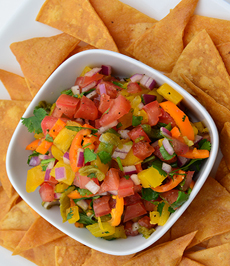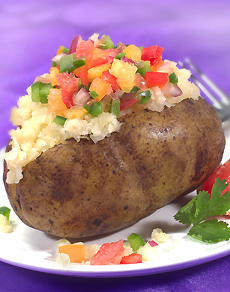TIP OF THE DAY: Homemade Salsa For National Salsa Month
|
|
Salsa, which has been America’s favorite condiment since 2000 (when it supplanted ketchup),actually has been a favorite condiment for thousands of years.
The chile was domesticated around 5200 B.C.E., and tomatoes by 3000 B.C.E. both in Central America. The Aztecs combined the two, often along with other ingredients like beans and squash seeds, into a condiment, which the Conquistadors named “salsa,” or sauce. Here’s the history of salsa. May is National Salsa Month. If you’ve never made salsa at home, now’s the time. Basic salsa couldn’t be easier: salsa fresca, “fresh salsa” made with raw ingredients, is a combination of chopped tomatoes, onions, chiles and lime juice. |
|
|
There are many easy recipes for salsa fresca; most use jalapeño chiles. But you can layor the chile flavors by adding other varieties. We adapted this recipe from one for Five Chile Salsa from Melissas.com. It adds an Anaheim chile to the jalapeño. The Anaheim chile was developed around 1900 in Anaheim, California from New Mexican pasilla chiles. (See the different types of chiles.) The Anaheim is not a hot chile. It has a modest heat level, as low as 1,000 Scoville Heat Units (SHU). Jalapeños are about 10,000 SHU, while habaneros are 100,000 SHU or more. Bell peppers are also chiles (all chiles come from the genus Capsicum), but they have no heat. Chiles, new world fruits, were mis-named “peppers” by Columbus’s sailors, who compared their heat to black pepper (no relation). While much of the world continues to use the misnomer “pepper,” we use it only for bell peppers, calling all other varieties by their proper name, chile. |
||

